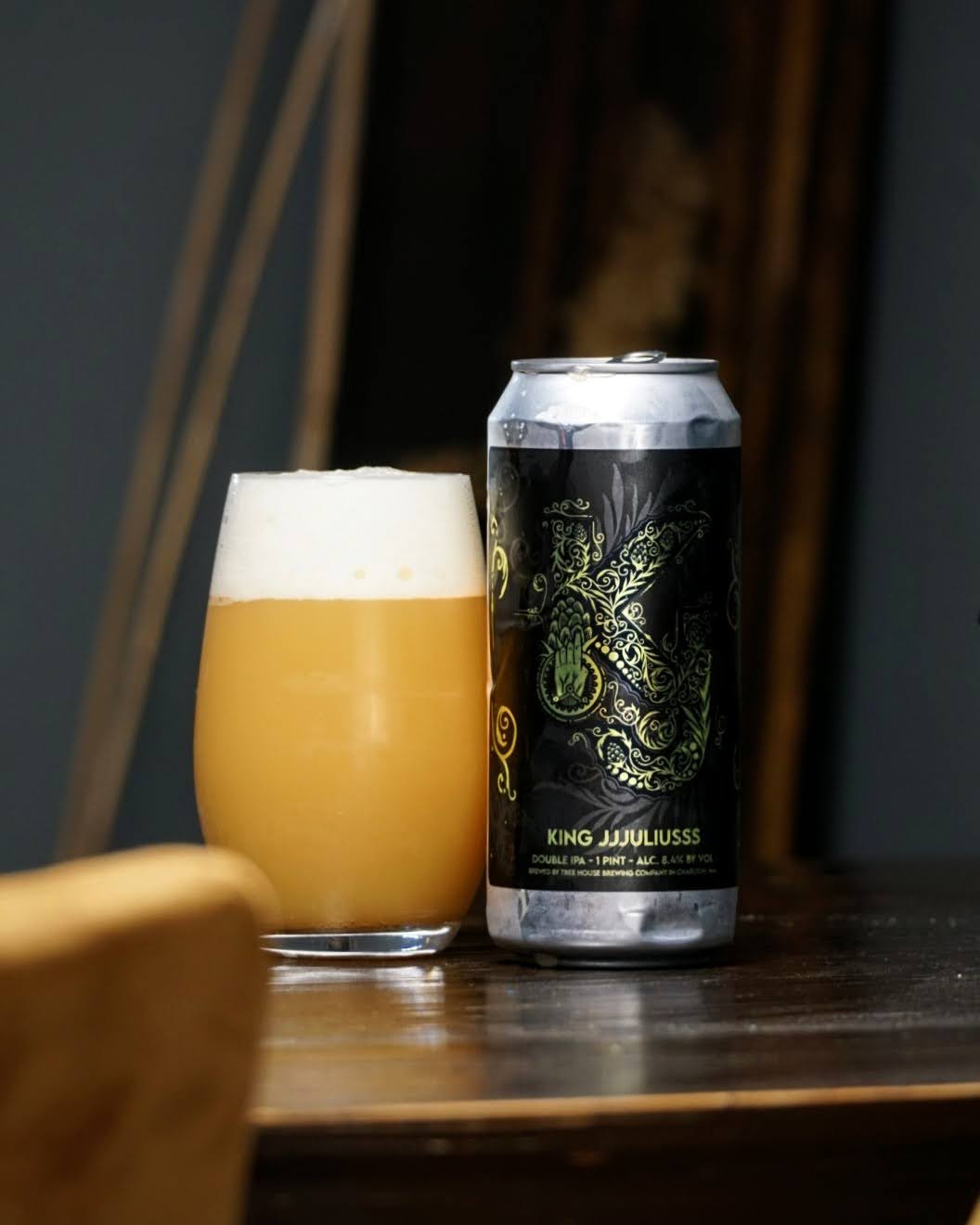Now, this is possibly a controversial topic, but I will argue that storing your beer cold matters more than the date the beer was canned. We beer lovers normally focus mostly on factors such as ingredients (hops in particular), brewing techniques, and how fresh the beer is, but one crucial aspect often goes overlooked – the temperature at which craft beer is stored. In this blog post, we delve into the reasons why storing craft beer cold is essential for preserving its quality and maximizing your enjoyment.
Give me ultra-fresh!
If you are a geek like me, and by and large drink modern hazy IPAs, you’ll be familiar with the common fetishism of drinking your beers ultra fresh. We don’t drink anything past 3 months old, and even that is pushing the limits. If we could, we’d be sleeping right next to the fermentation tank to get the first sips when the beer would be ready to be canned. Okay, that was a slight exaggeration. However, what many of us do is that we keep track of what beers are being launched at every moment, so we know how fresh they are. Many breweries still do not add a canned date to their cans or bottles, so there is no way of knowing otherwise.
How important is freshness?
It depends on the style of beer. Some styles will even improve over time. But most styles will deteriorate and are best had fresh, typically all modern hop-forward pale ales (IPA, DIPA, TIPA) and imperial stouts with a lot of adjuncts in them, like fruit or berries. In this article, I will focus on modern hop-forward beers.
Pale ales, and craft beers in general, are organic products and just like any perishable product, are susceptible to degradation over time. This is inevitable, however, so the question then is rather: just how fast will they degrade? And can it be slowed down?
Why cold storage matters
Here’s the thing: Storing beer at a higher temperature, such as room temperature, accelerates the deterioration process. Heat causes chemical reactions that break down the delicate compounds in beer, typically the hop compounds, which can change the structure of the beer, reduce (hop) flavour and even cause off-flavours. Cold storage inhibits these reactions, helping to maintain the beer’s freshness, aroma, and flavour for a longer period. If you want to experience the beer the way the brewer intended, keep your beer refrigerated.
Studies show that keeping a beer at room temperature for 5 days will have an impact, albeit a minor one. This chart is from the “Beer Steward Handbook” (retrieved from radicalwaybrewing.com):
Furthermore, studies in 2018 by the Leibniz-Institute for Food Systems Biology at the Technical University of Munich (Leibniz-LSB@TUM), showed that even cold stored beer would lose more than one-third of the aroma over a period of 3 months. They tested the reaction in the same beer stored at 5 degrees Celsius versus 20 degrees Celsius. In the first case, the concentration of the tested hop compound had decreased to 59 and 67 per cent of the original content. For the beer stored at 20 degrees, the loss was significantly larger, with concentrations down to 30 and 40 per cent of the original content. After further 3 months of storage, the compound was practically gone.
What are the signs of spoilage?
As the above study show, and which I have often experienced myself, even in supposedly fresh beers, is that the aroma tends to go flat or even disappear. One thing that I have experienced a lot, is when the beer feels flat and stale and in general lacks vibrancy. Sometimes this is also accompanied by a yeasty character, both in aroma and flavour, often a sewer or toilet-like character, or that of potatoes or potato water (the one you’ve boiled your potatoes in). Furthermore, there could be signs of deterioration by oxygen (oxidation). Some oxygen in the can is inevitable, but if not stored cold, this will go a lot faster and in the worst case, you’ll notice a very flat beer that tastes and smells of paper or wet cardboard, and in some cases maybe even the colour has changed to a lighter brown-yellow or even greyish.
High-ABV beers will also tend to feel boozy and there is an apparent divide in the structure, with astringent alcohol on the one side, and the sweetness of malt and hops on the other. It’s conceivable that this would not have been as apparent had the beer been stored cold all the time.
My hypothesis is that some smaller brewing mistakes are accentuated when the beer is not stored cold, and if on the contrary the beer had been stored cold and consumed fresh, it’s possible that you wouldn’t even have noticed the flaw.
Expensive beer “wasted”

This all leads me to a final consideration: is it worth it to buy expensive beers from overseas? Occasionally, I buy a lot of beers from the US. Let’s face it, in Europe we still consider US breweries to be the best. But, how often have I not bought expensive and hyped-up imported beers from the US to find they are not better than what we drink here in Europe? Why is that? Well, for one, the cold chain is usually broken. Either during transport and storage within the US, during overseas transport and during storage and distribution in Europe. And possibly all of the above. And even if beers have been shipped cold-chain to Europe and the distributor/shop has taken good care of them before shipping to me, shipping to me inevitably breaks the chain and sometimes it can take up to two weeks before the beers arrive.
I, therefore, tend to think of it like this: I am not drinking the “original” product and shouldn’t really be comparing. I am getting a product that has been slightly altered along the way to my home. The beer has died a little. Now, I do tend to buy overseas beer during the winter months when it is cold in Europe, but when summer comes, I stay away. I live in hot and sunny Southern Spain, and just the thought of delicate cans from Fidens or Other Half laying about unrefrigerated for up to two weeks before they reach my home is just unbearable.

What if the beer is more than 3 months old?
If stored cold, they are still highly drinkable. I was recently gifted a beer that had been canned a whole year prior to drinking it, and there were not many discernible signs of deterioration. As a disclaimer, it was my first time drinking that beer, so I could not compare the experience to having a fresh can. What I can say, is that the structure was more or less intact, and if you don’t drink a lot of these beers, maybe you wouldn’t even have noticed. There was a marmalade-like character to the beer, some sweet honey-like notes, and that is what told me that this beer was not fresh. But, surprisingly, it was still highly enjoyable.
Some simple advice
The moral of the story is, unsurprisingly: keep your beers cold at all times and possibly consider getting a fridge for your beers only, that way you can control temperature and make sure it is always constant. Also, keep in mind:
- Beers are best kept between 2 to 10 degrees Celsius (35 to 50 degrees Fahrenheit).
- Avoid shock and abrupt temperature changes.
- Do not freeze your beers! That will seriously damage flavour and structure. So don’t be tempted to put them in the freezer.
- Consider not buying from a shop or retailer that keeps modern hoppy beers stored at room temperature. I follow this advice myself 100%, but I know a lot of stores that don’t and will say that the room temperature is constant (controlled), but it is still room temperature.
- Consider whether imported beers are truly worth it if you are not guaranteed that the cold chain has not been broken. Seriously. You may not be drinking the product as it was intended at all.
- Consider serving your beers at the right temperature. I tend to drink lighter beers like session IPAs and pale ales quite cold, after all, they are usually primarily refreshing and a lot less complex than their heavier siblings. The latter ones I tend to leave resting for some 10 minutes after taking them out of the fridge. If you drink a double IPA too cold chances are you will miss out on a lot of nuances and flavours.
That’s it – enjoy your fresh beers cold!
Sources:
- Reglitz K, Lemke N, Hanke S and Steinhaus M. On the behavior of the important hop odorant 4-mercapto-4-methylpentan-2-one (4MMP) during dry hopping and during storage of dry hopped beer. Brewing Science, 2018; 71: 96-99 [abstract]


Leave a Reply